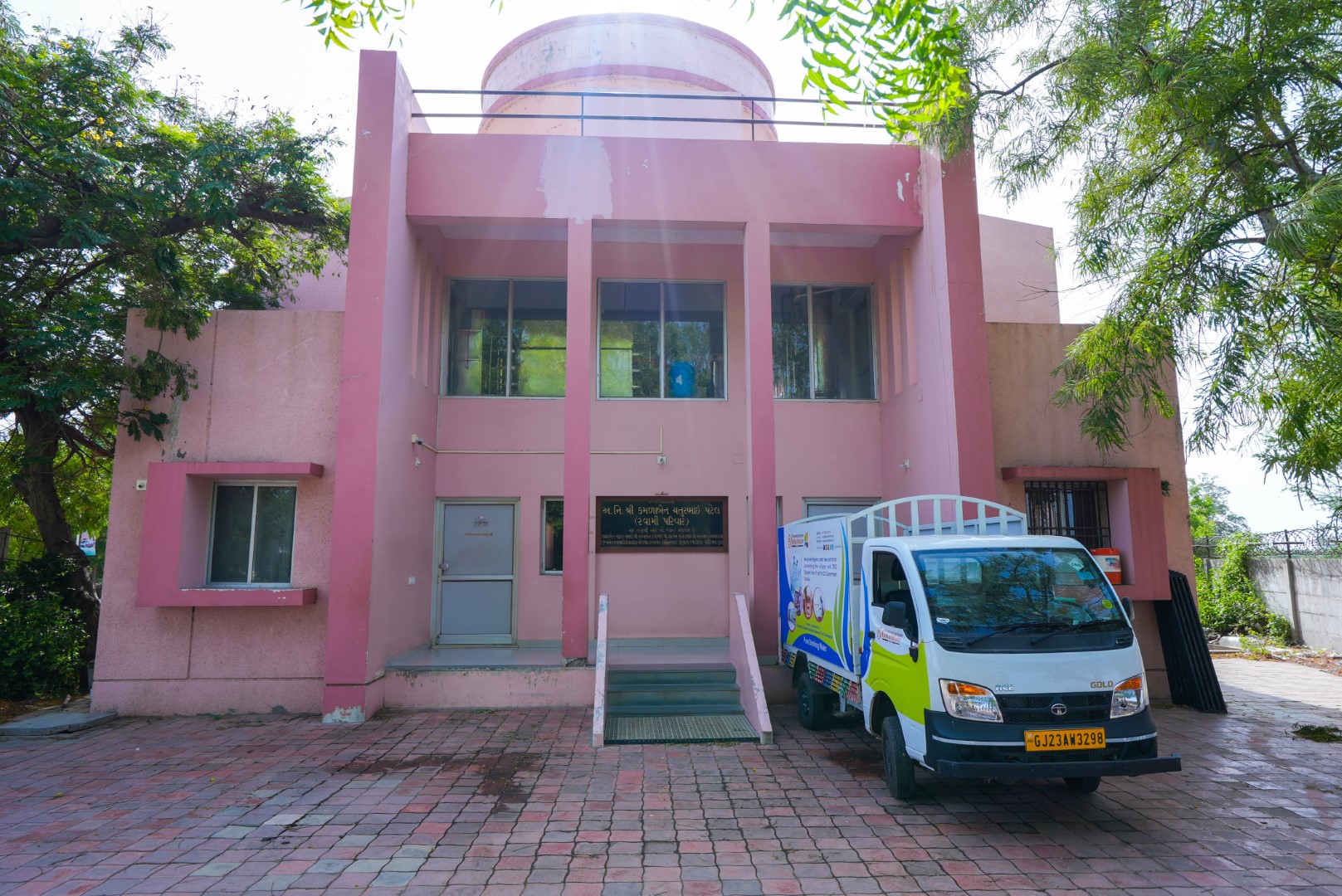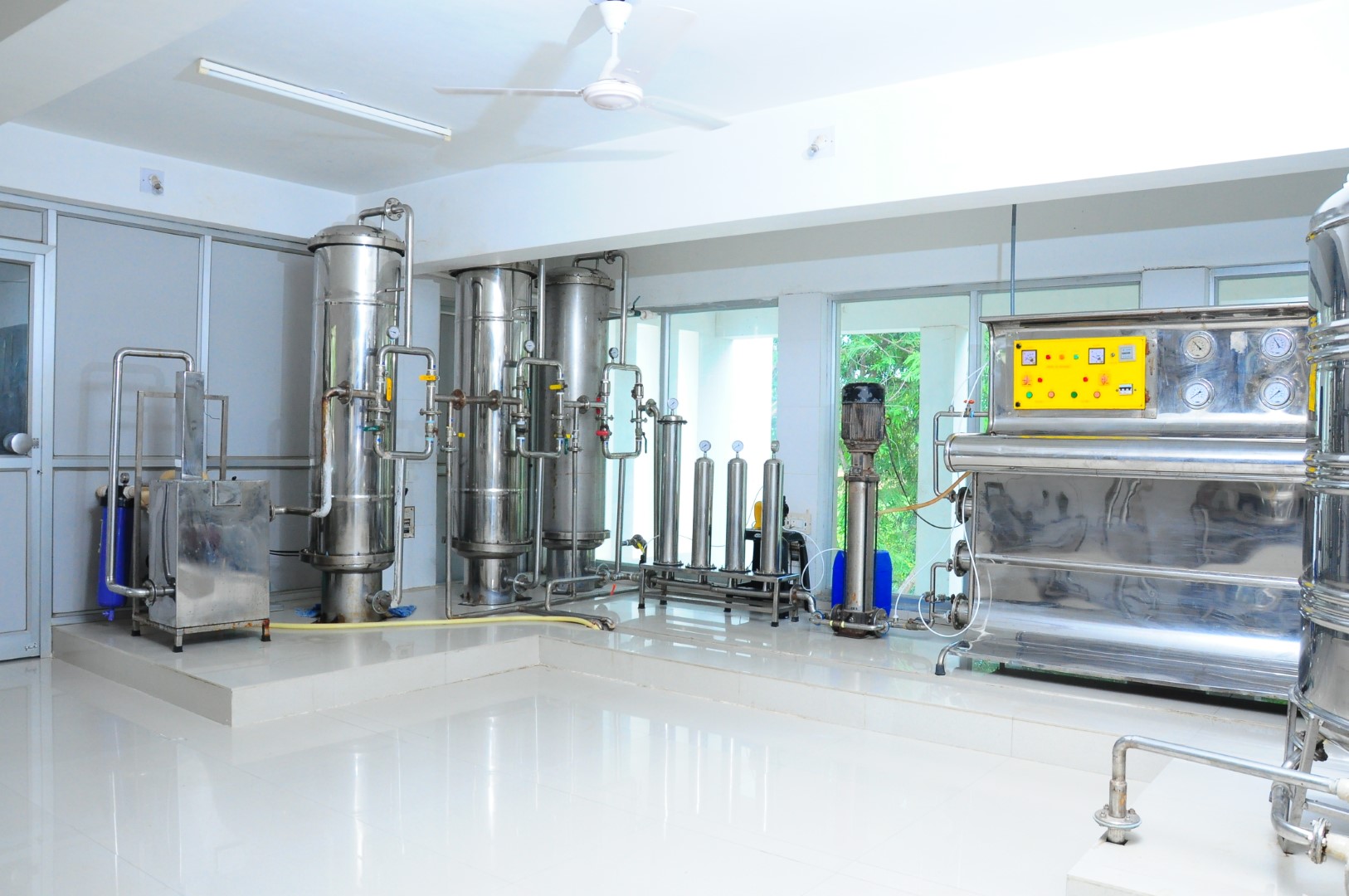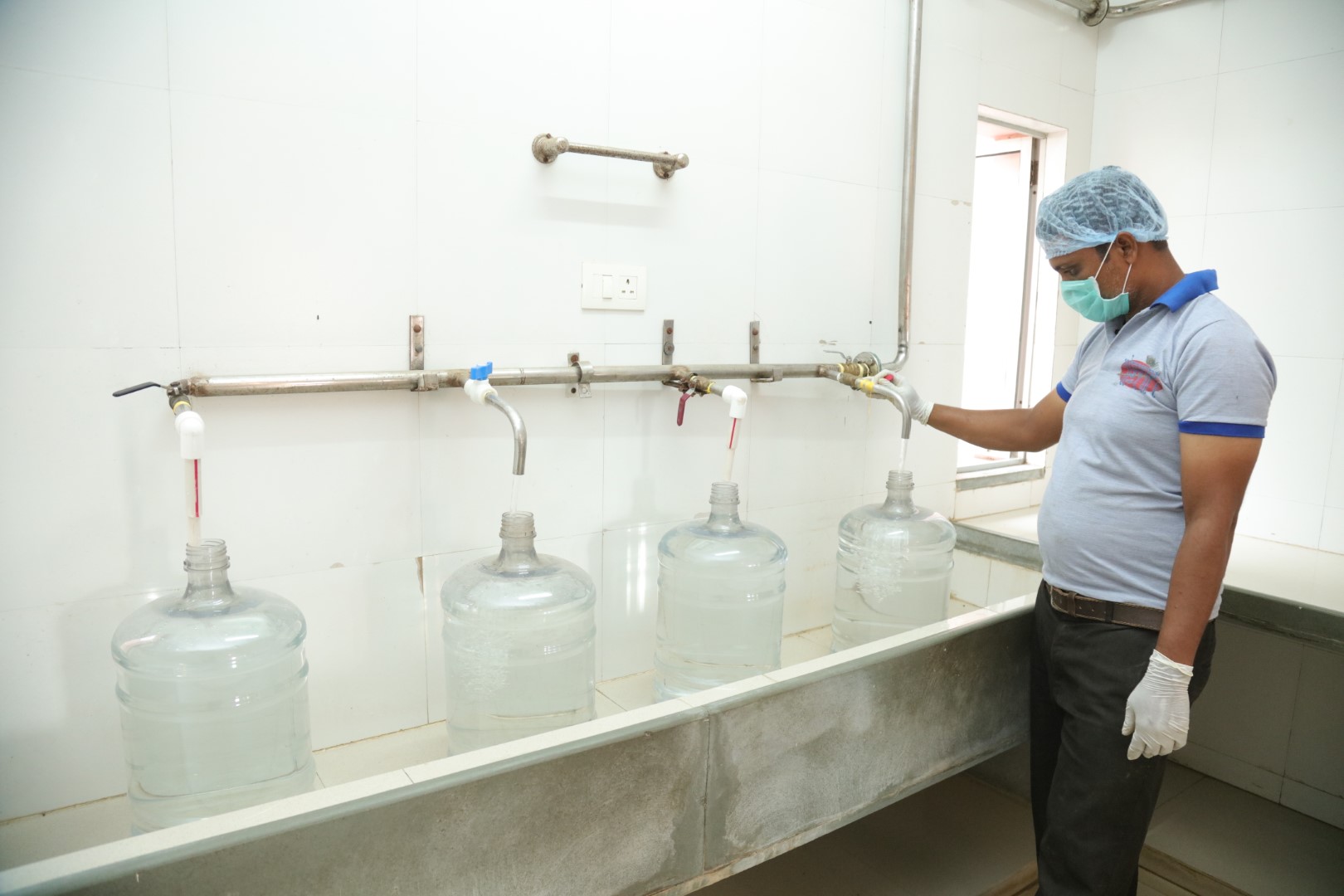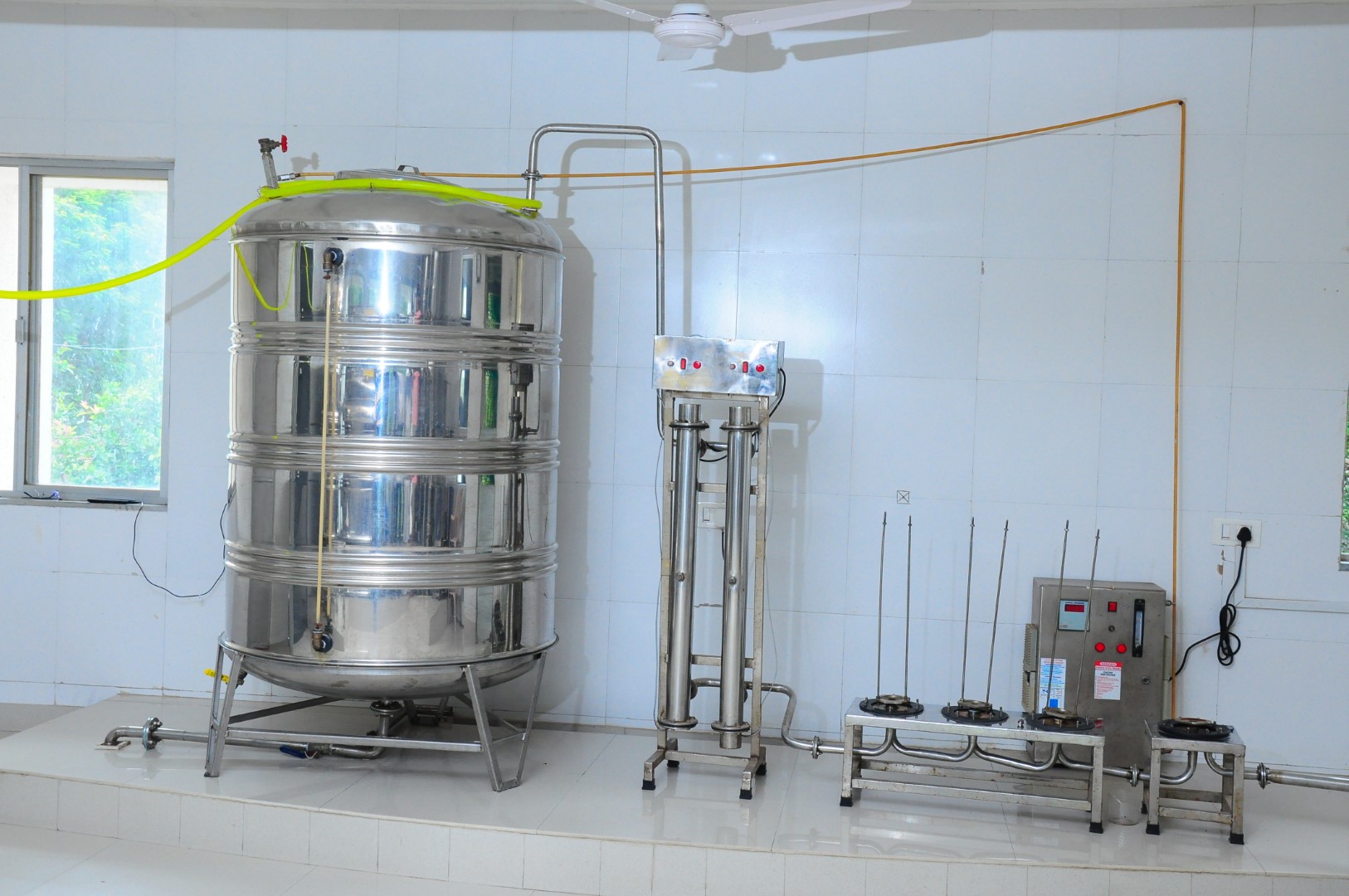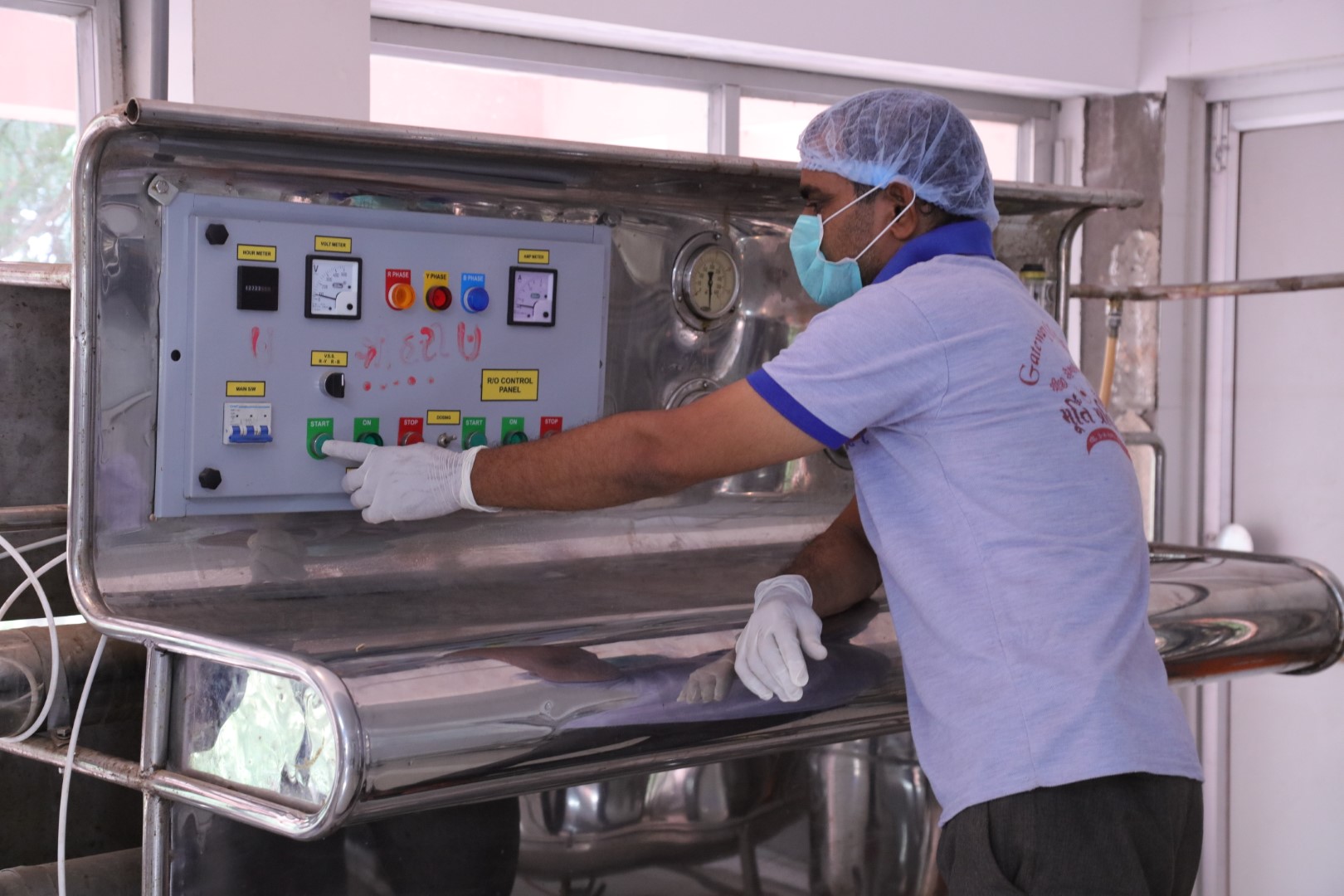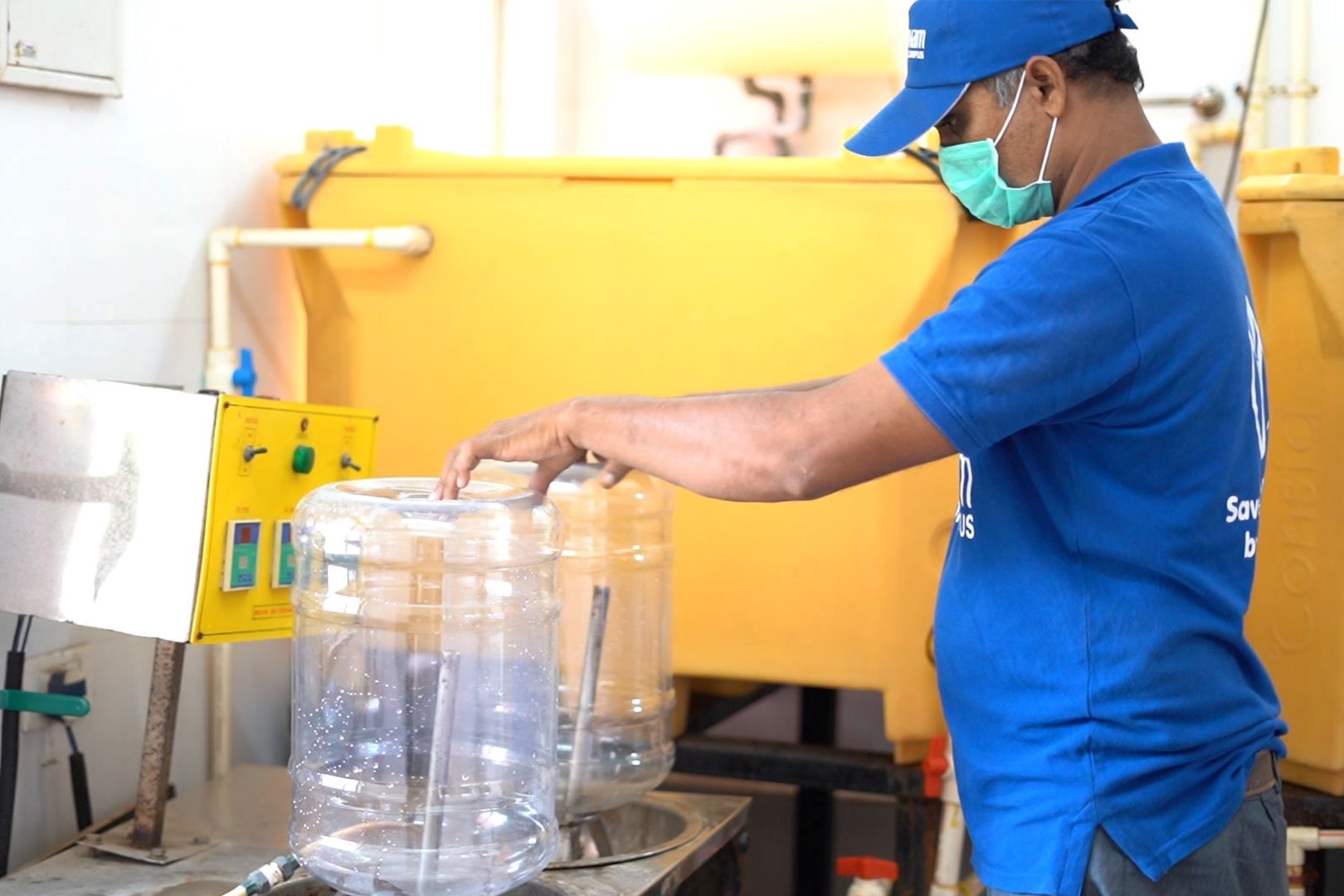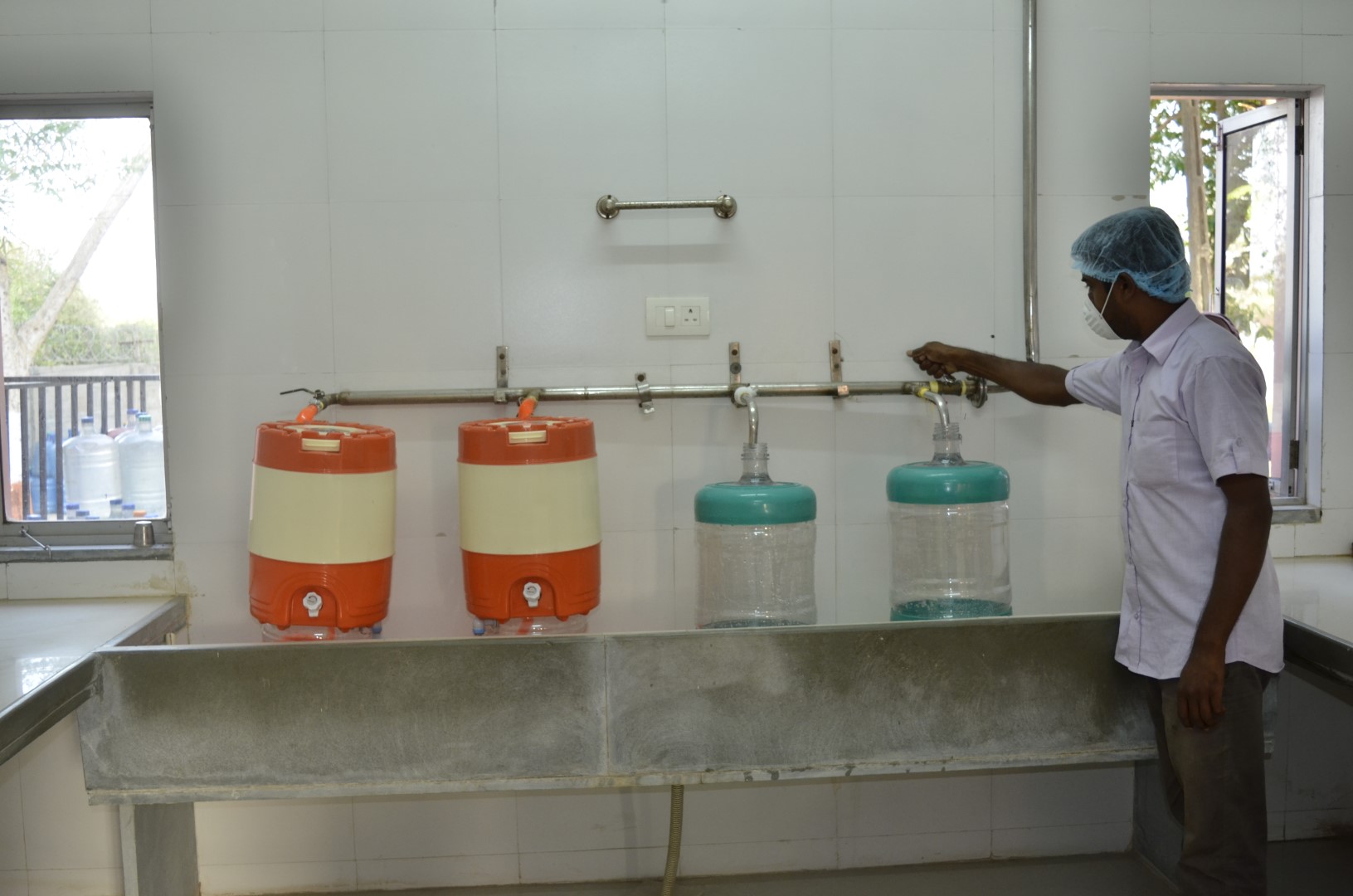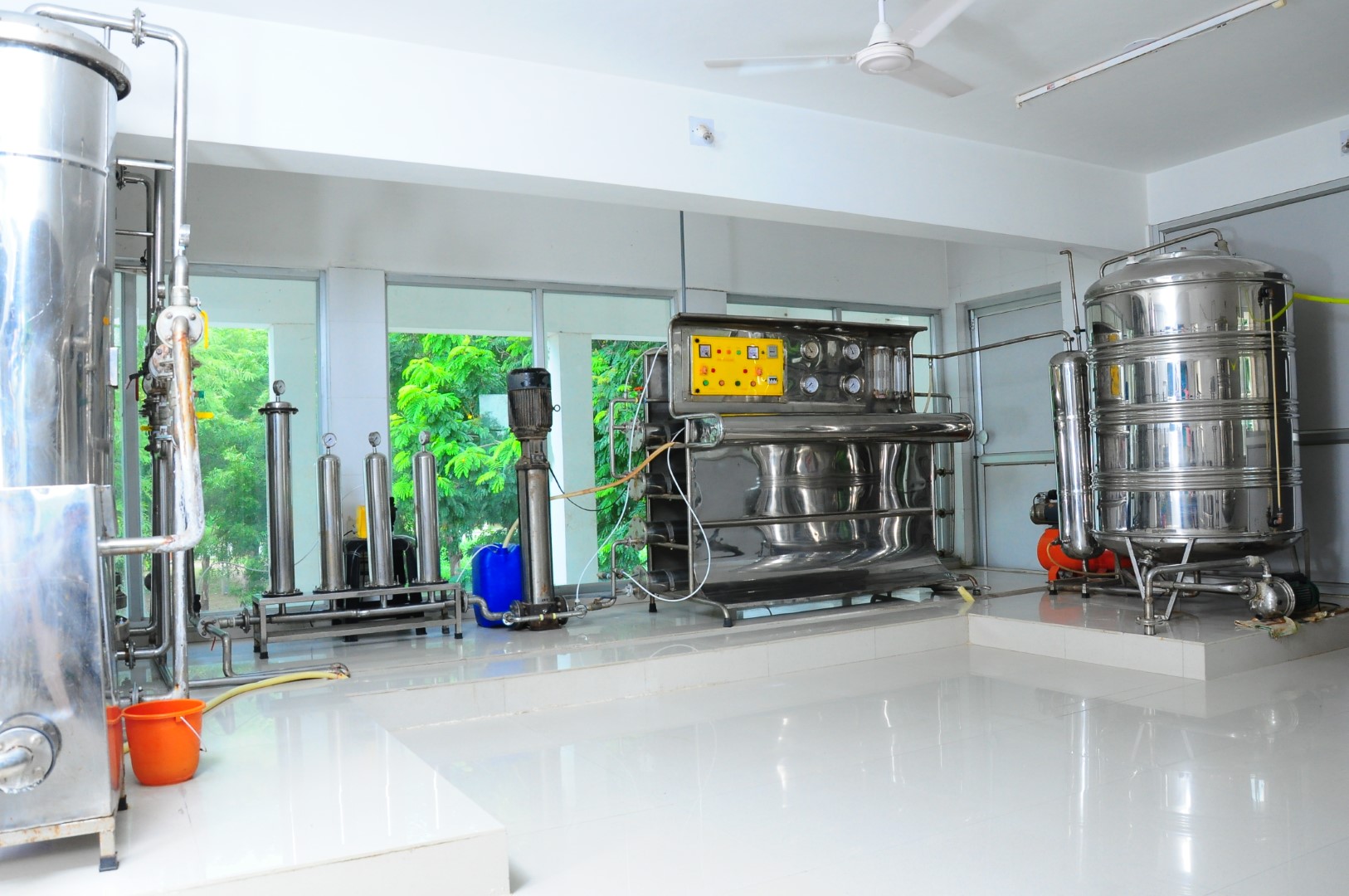R.O. Water Filtration Plant
।। शं नो वरूण : ।। (तैतरीयोपनिषद् )
Water consumption risk at Gokuldham and in surrounding areas The water in the surrounding villages in Gokuldham Nar contains salt levels that are unfit for human consumption. The area reports a “TDS” count of 1,900 mg per litre, a number that far exceeds levels considered safe. Our Gokuldham water treatment facility provides water with a TDS count of 160 mg per litre, a level that provides a balance between palatability and safety.
TDS is a measure of the concentration of dissolved solids in water. These dissolved solids can have organic and inorganic matters, the main ones being magnesium, sodium and potassium and the anions carbonate, bicarbonate, chloride, sulphate and nitrate particularly from agricultural use.
Whilst not all TDS are harmful to humans, having a little is actually common and makes water more palatable, it is necessary to address the levels to ensure the safety for human consumption.
About the Water Treatment Facility
The water treatment facility at Gokuldham Nar became operational in the year 2008 and is managed by nine staff with responsibility for maintenance of the equipment, delivery of the water to the surrounding villages and overall operations of the plant.
The plant has a capacity to filter 2,000 litres of water per hour, and since its inception, the Campus has been supplied over 1.5 million litres of water to seven villages and 7,000 students within 22 government schools. Schools and students are provided water totally free of cost and the surrounding villages are supplied water at very low cost. All the water supplied and the equipment is subject to strict quality control and maintenance processes daily.
About the Water Treatment Process at Gokuldham
The water treatment facility uses an industry recognized method of filtering and purifying water called reverse osmosis (“RO”). This is a process where pressure is applied to salient water and passes through a permeable membrane to remove undesirable solids, matter, and contaminants.
The process of purifying the water at Gokuldham involves the below steps to ensure the safety for consumption
